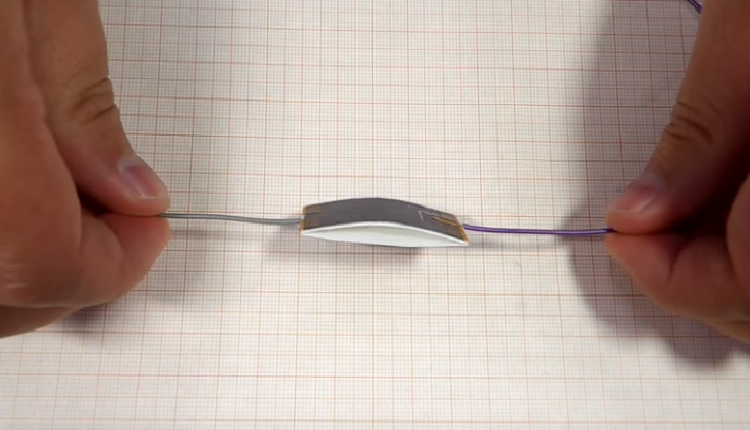Researchers from EPFL (École polytechnique fédérale de Lausanne) stumbled upon a clever discovery, using everyday materials to form a small device that can generate enough energy to power several diodes.
How did they do it?
In order to create the device, a team from EPFL, working with researchers from the University of Tokyo, used Teflon tape and a pencil. The researchers fashioned the materials in an 8-cm2 device capable of generating more than 3 Volts of power. According to EPFL, that’s an eco-friendly system that can produce the same current as two AA batteries – enough to operate a remote control.
The system employs the concept of static electricity. When the two insulators (paper and teflon) come into contact, they gain or lose electrons. The system has two small cards, and one side of each card is covered in pencil, which acts as the system’s electrode.
The team then applied Teflon to the opposite side of one of the cards, so that when they came together, they created a sandwich. They were then taped together to create an electrically neutral system.
When someone presses down on the system, the two insulators come into contact to create a charge differential: positive for the paper, negative for the Teflon. Once released, and the cards separate, the charge passes to the carbon layers, which act as electrodes. A capacitor placed on the circuit absorbs the weak current that is generated.

Xiao-Sheng Zhang, a postdoc at EPFL’s Microsystems Laboratory and the University of Tokyo, even used sandpaper to give the system an upgrade. Using sandpaper increases the contact area, which in turn improves the system’s output six times.
Watch the system in action.
“This could have applications in the medical field, for example. Ultra low-cost sensors made of paper for various diagnostic purposes, which would be especially practical for developing countries, are already being tested,” said Jürgen Brugger, a professor at the Microsystems Laboratory. “This paper system could represent the next step, since it would remove the need for conventional batteries. Another advantage is that it does not generate waste, since it can simply be incinerated or left to decompose naturally.”
The device was presented at the IEEE-MEMS conference.


Comments are closed, but trackbacks and pingbacks are open.